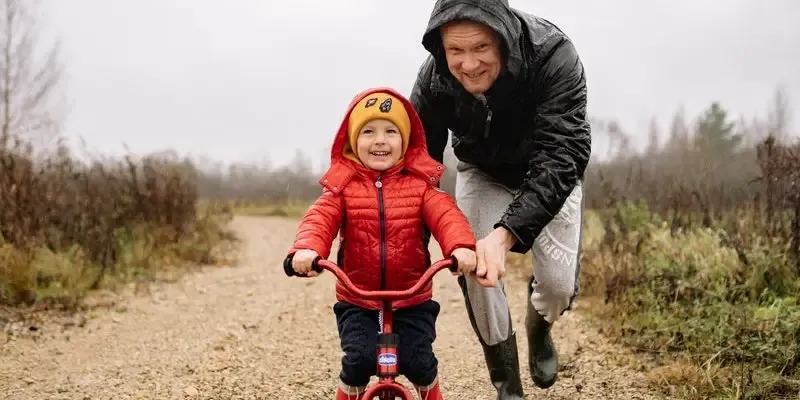How Learned Hopefulness Can Change Your Client’s Life
 Hope is something we cling to when uncertainty looms or things begin to go wrong – unclear results from a scan, a call saying our loved one has been in an accident, or notification of an approaching storm.
Hope is something we cling to when uncertainty looms or things begin to go wrong – unclear results from a scan, a call saying our loved one has been in an accident, or notification of an approaching storm.
Hope may be all we have.
But what is hope, and why does it matter? Well, according to positive psychology founder Martin Seligman (2011, p. 260), hope is “when you expect the best in the future, and you work in order to achieve it.”
Thankfully, as we will find out in this article, hope is more of a habit than a state of mind, and like any other, it can be learned (Tomasulo, 2020).
Before you continue, we thought you might like to download our three Goal Achievement Exercises for free. These detailed, science-based exercises will help you or your clients create actionable goals and master techniques to create lasting behavior change.
This Article Contains:
- What Is Learned Hopefulness?
- Learned Hopefulness vs Learned Helplessness
- A Look at the Theory and Research
- Positive Psychology Interventions & Hopefulness
- Practical Applications of the Theory
- A Brief Review of Dan Tomasulo’s Book
- Helpful Resources From PositivePsychology.com
- A Take-Home Message
- References
What Is Learned Hopefulness?
Traditional psychology and pharmaceutical intervention have been blamed for doing only half the job of fixing mental illness and emotional pain.
“They get us out of the hole, but they don’t really keep us out,” says Dan Tomasulo (2020, p. 3). And the figures back it up: 80% of those who recover from treatment in therapy subsequently need more help (Tomasulo, 2020).
So, what about the 20% who don’t relapse? They have learned hopefulness. Such hope “is not so much a state of mind as it is a habit of mind,” continues Tomasulo (2020, p. 3). More crucially, as with other habits and practices, it is one we can learn and develop.
Hope is not the same as wishful thinking; hope embodies agency and willpower (Luthans et al., 2015). Even when someone high in hope finds their way blocked, they proactively generate alternative paths.
While there is no unifying theory of hope, research suggests high-hope people share (Tomasulo, 2020):
- A high degree of agency
- The energy and motivation needed to bring about change
- A path to get from where they are now to where they want to be
- The ability and capacity to overcome obstacles by generating new paths
- Considerable resilience and resourcefulness
We can develop hope through setting stretch goals (challenging yet achievable) and approach goals (what we should do, rather than avoid doing). They increase our autonomy while helping us become more engaged (Luthans et al., 2015).
Such learned hopefulness helps combat limiting our future options by encouraging and fostering high-hope choices, including (Tomasulo, 2020, p. 19):
- Seeing possibilities rather than remaining fixed and unchangeable
- Noticing the beauty, blessings, and benefits rather than focusing on negatives
- Cultivating positive feelings rather than settling on habitual negativity
- Focusing on strengths rather than weaknesses
- Creating goals that are challenging rather than unengaging
- Finding purpose rather than a lack of meaning
- Cherishing relationships rather than remaining isolated and self-interested
Ultimately, the points combine and strengthen one another to build and regulate how much hope we have.
Learned Hopefulness vs Learned Helplessness

Without it, we sink into hopelessness and despair. And yet, hope is not a vague, fuzzy emotion; it is a cognitive process, involving (Brown, 2021):
- Setting realistic goals
- Persistence – overcoming what gets in our way
- A belief in ourselves
Hope is not developed in comfort – during the easy times – but through adversity and discomfort. For children, hopefulness is learned from witnessing positive relationships and experiencing boundaries, support, and the sort of consistency that gets them through difficult times (Brown, 2021).
“Hopelessness arises out of a combination of life events and negative thought patterns,” including self-blame and a belief that we cannot change ourselves or our circumstances (Brown, 2021, p. 101).
On the other hand, learned hopefulness focuses more on what is ahead, unlike depression or learned helplessness, where the individual becomes stuck on a single path, or worse, no path (Tomasulo, 2020). When an obstacle hits, even if expected, the individual remains blocked, unable to find an alternative route, and accepting the situation — hopeless and helpless (Luthans et al., 2015).
In Martin Seligman’s (2006, 2011) original experiments into learned helplessness, he found that animals, including cockroaches, dogs, rats, and mice, gave up if they repeatedly could not do anything about a bad experience they faced.
And so it can be for humans. When individuals find there is nothing they can do about a situation, they are at risk of resigning themselves to it. But that isn’t true for all people. One-third of the human population doesn’t fall into helplessness; they believe setbacks are temporary and that they can do something about it. They choose optimism and hope rather than negativity and defeat (Seligman, 2006, 2011).
A Look at the Theory and Research
When things go wrong, evolution has given us a switch (metaphorically speaking) that enables us to shut down and save energy. We are left looking to the future, expecting the worst (Tomasulo, 2020).
“How well we envision what is yet to come will determine our motivation” and our hope (Tomasulo, 2020, p. 10; Seligman, 2011). And unlike other positive emotions, hope is most relevant and valuable when life is at its most difficult or uncertain.
Based on a review of the theories and the research, Tomasulo (2020) identifies the following as important to recognizing hopelessness and defining learned hopefulness:
- Rather than being 100% positive, hope requires negativity and uncertainty.
- Hope is not fixed – on or off. It has degrees and can be activated and cultivated.
- Hope is not the same as faith. Hope is the belief that we have the power to change our lives.
- We can adjust aspirations and goals to manage our degree of hope.
Hope can be thought of as a resource, helping us assess what we can do in a situation by defining it differently. While we typically have a negativity bias, focusing on the worst that has happened or could happen, hope shifts our perception toward realizing that there is another, more positive, way to look at things.
Boosting hope has many benefits, including (Cheavens & Guter, 2018; Kirmani et al., 2015):
- Increasing positivity and reducing negative thoughts
- Building self-esteem
- Boosting energy and confidence
- Improved psychological functioning
- Reduced distress
Ultimately, “hope, optimism, and future-mindedness are a family of strengths that represent a positive stance towards the future” (Seligman, 2011, p. 260).
Positive Psychology Interventions & Hopefulness

Learned hopefulness interventions can help us (Tomasulo, 2020):
- See possibilities rather than limitations
- Transform negative beliefs into hopeful ones
- Encourage positive emotions
- Explore and increase the use of strengths
- Set motivating goals
- Find purpose and meaning
- Create deep relationships built on giving and receiving
The most helpful exercises combine several of the above points to create a shift in the individual toward hopefulness and away from hopelessness.
We describe three of the most popular and influential interventions below (Tomasulo, 2020, Dweck, 2017; Seligman, 2011).
Seeing possibilities
While those with a fixed mindset are confronted with limitations, others, adopting a growth mindset, see opportunities and the possibility of improving (Dweck, 2017).
Shifting toward an optimistic outlook can be learned. The best possible self exercise (part of the Positive Psychology Toolkit©) increases positive expectancies and hope (Tomasulo, 2020).
Begin by carving out a few minutes from your busy day to think about an ideal future, where every possible positive outcome has worked out in all areas of your life: health, relationships, work, finances, and hobbies.
- Step one
Write it all down, capturing all the best aspects of the ideal future. Be creative and unlimited, without being caught by obstacles. - Step two
Create a scene or image board (physically or digitally) containing downloads, cutouts, and drawings that capture a sense of how this hopeful future might look and feel. - Step three
Find a place in your house or capture an image on your phone or computer where you can see it and add to it.
Spend time looking at the images and thinking about what they represent; “get your dream into focus so you can work towards your goal” (Tomasulo, 2020, p. 35).
Challenges as opportunities
Tomasulo (2020) shares the following exercise, originally developed by positive psychotherapist Tayyab Rashid and psychologist Martin Seligman, to reframe past experiences and increase feelings of hope and learned optimism.
- Step one
Write down three negative moments in your life that had unexpectedly positive outcomes. Specifically, recognize where doors only opened because others closed. - Step two
Write about each one. What positives emerged? What would you do differently now? What did you do that enabled the positive outcomes?
By reflecting on how dark times can lead to positive changes in our lives, we can learn and build hopefulness.
Three good things exercise
When Martin Seligman and his team (2011) gave a group of depressed people a series of positive psychology exercises, they became less depressed and happier within one week.
One of the exercises that had the greatest effect, over the longest duration, was practicing gratitude. Give the three good things exercise a try (modified from Seligman, 2011, p. 84):
- Step one
Write down three good things that happened at the end of the day. They can be big (I got a new job.) or small (The cashier smiled at me as I ordered a coffee.). - Step two
Next to each good thing, write answers to the following questions:
-
- Why did this good thing happen?
- What does this mean to me?
- How can I have more of this good thing in the future?
“The intervention strives to promote resilience, positive emotion, meaning and purpose, and positive social relationships.”
Seligman, 2011, p. 84
7 Habits of the most hopeful people – Dr. Dan Tomasulo
Practical Applications of the Theory
There are many practical applications for understanding and building hope, both at a more general, life-enhancing level and more specifically, such as in treating clients in therapy and the workplace.
Hope therapy works by setting goals, working with clients to identify paths to success, and acquiring the energy and agency to follow them (Rand & Cheavens, 2009). Successful treatment results in the client increasing their self-belief and hopefulness in what they are capable of, encouraging positive emotions and wellbeing (Snyder, 2002).
At work, “managers who are capable of identifying hopeful tendencies (or signs of hopelessness) can be better equipped to diagnose the state of hope among their employees” (Luthans et al., 2015, p. 94). And this is important because research shows that nurturing a culture of hope lifts employees’ attitudes and wellbeing and boosts performance.
Overcoming depression with hopefulness
As far back as the 1960s, Seligman suggested that feelings of giving up and helplessness, when faced with adversity in one situation, can carry over to others, resulting in learned helplessness and depressive symptoms (Tomasulo, 2020).
It has since become clear that “when something bad happens, we are evolutionarily programmed to shut down” (Tomasulo, 2020, p. 9). Learned hopefulness can reverse this; rather than looking backward, hope encourages us to look forward, increasing positive emotions and mental wellness.
Ongoing research recognizes the benefits of fostering hope in alleviating symptoms of mental health issues, such as depression, particularly when accompanied by goal setting (Kirmani et al., 2015).
A Brief Review of Dan Tomasulo’s Book

Tomasulo’s message is clear: Hope is one of our greatest strengths, helping us reframe what the future could be (without ignoring the reality of suffering) and opening up our potential for growth, mental wellness, and self-care.
Martin Seligman describes Learned Hopefulness as “the best go-to book on how to relieve your depression.” While New York Times bestseller Adam Grant suggests it’s the “next best thing to therapy […] grounded in science, filled with heartwarming stories, and brimming with hope” (Tomasulo, 2020).
Helpful Resources From PositivePsychology.com
We have many resources available for therapists that help maintain and boost positive emotions such as hope and optimism.
Why not download our free positive psychology exercise pack and try out the powerful tools contained within? Some examples include:
- The Strengths Wheel
This is a valuable tool for becoming more aware of strengths and their potential for supporting growth. - The Bull’s-Eye Values Survey
Use this tool to assess values and values–actions discrepancies for directing future sessions and interventions.
Other free resources include:
- It Could Be Worse
This is a valuable thought experiment for developing resilience in clients through reframing difficult situations. - What Is Hope?
This thought exercise helps clients consider what hope is and how to build more.
More extensive versions of the following tools are available with a subscription to the Positive Psychology Toolkit©, but they are described briefly below:
- Hope Map
How we think about the future can impact our degree of success in life, work, education, and relationships.
-
- Step one – Set a clear and exciting goal.
- Step two – Write down several actions and pathways to pursue the goal.
- Step three – Identify obstacles that may get in your way.
- Step four – Identify strategies to overcome each obstacle.
- Step five – Capture ideas for maintaining energy and motivation.
Finally, reflect on how it would feel to pursue and reach the goal.
- The Life Certificate
Losing a loved one can leave us feeling hopeless. Thinking of all the good things they offered and shared can help us cope with grief.- Step one – Think of the special memories you shared with your loved one.
- Step two – Add them to your life certificate template.
- Step three – Reflect on each of the memories and the effect they have on you.
Finally, think about what was helpful in completing this activity and how it may have benefited you.
- 17 Motivation & Goal Achievement Exercises
If you’re looking for more science-based ways to help others reach their goals, check out this collection of 17 validated motivation & goal achievement tools for practitioners. Use them to help others turn their dreams into reality by applying the latest science-based behavioral change techniques.
A Take-Home Message
Hope becomes more vital and valuable as life becomes increasingly uncertain and we face ever greater challenges. While we may think of hope as a state of mind – something we either have or don’t – it is widely accepted as a habit we can learn and improve.
But it’s not always easy; “cultivating hope takes deliberate effort,” intention, action, agency, and willpower (Tomasulo, 2020, p. 35).
The rewards are considerable. Hope matters because it has clear, tangible benefits. It’s neither blind faith nor wishful thinking. Someone high in hope has a greater degree of agency, energy, and motivation to take the path to where they want to be and overcome obstacles along the way.
Excitingly, we can learn to make high-hope decisions, reaping the rewards, such as seeing new possibilities, focusing on the positives, creating big, exciting goals, and finding purpose and meaning in our lives.
Now that is something worth hoping for.
We hope you enjoyed reading this article. Don’t forget to download our three Goal Achievement Exercises for free.
- Brown, B. (2021). Atlas of the heart. Vermilion.
- Cheavens, J. S., & Guter, M. M. (2018). Hope therapy. In M. W. Gallagher & S. J. Lopez (Eds.), The Oxford handbook of hope (pp. 133–142). Oxford University Press.
- Dweck, C. S. (2017). Mindset. Robinson.
- Kirmani, M. N., Sharma, P., & Jahan, F. (2015). Hope therapy in depression: A clinical case work. International Journal of Public Mental Health and Neurosciences, 2(3), 39–44.
- Luthans, F., Youssef, C. M., & Avolio, B. J. (2015). Psychological capital and beyond. Oxford University Press.
- Rand, K. L., & Cheavens, J. S. (2009). Hope theory. In S. J. Lopez & C. R. Snyder (Eds.), Oxford handbook of positive psychology (pp. 323–333). Oxford University Press.
- Seligman, M. (2006). Learned optimism: How to change your mind and your life. Vintage Books.
- Seligman, M. (2011). Flourish: A new understanding of happiness and well-being and how to achieve them. Nicholas Brealey.
- Snyder, C. R. (2002). Hope theory: Rainbows in the mind. Psychological Inquiry, 13(4), 249–245.
- Tomasulo, D. (2020). Learned hopefulness: The power of positivity to overcome depression. New Harbinger.
Let us know your thoughts
Read other articles by their category
- Body & Brain (42)
- Coaching & Application (56)
- Compassion (26)
- Counseling (50)
- Emotional Intelligence (24)
- Gratitude (17)
- Grief & Bereavement (21)
- Happiness & SWB (39)
- Meaning & Values (25)
- Meditation (20)
- Mindfulness (44)
- Motivation & Goals (43)
- Optimism & Mindset (32)
- Positive CBT (25)
- Positive Communication (20)
- Positive Education (44)
- Positive Emotions (30)
- Positive Leadership (13)
- Positive Psychology (32)
- Positive Workplace (33)
- Productivity (16)
- Relationships (42)
- Resilience & Coping (34)
- Self Awareness (20)
- Self Esteem (36)
- Software & Apps (22)
- Strengths & Virtues (30)
- Stress & Burnout Prevention (33)
- Theory & Books (44)
- Therapy Exercises (35)
- Types of Therapy (58)




What our readers think
Dear Jeremy,
I really enjoyed your article! I would just like to comment that I practice Zhineng Qigong and really feel the effects of a positive mindset and having hope on my health. Zhineng Qigong is a form of mind-body training (www.hunyuanqitherapy.com), and I get equipped with effective tools to turn negative thoughts into positive and helpful ones which aid in my healing process, yielding wonderful results so far. Thank you for bringing awareness to the importance of hope! Powerful intentions can have such an amazing impact and having hope to heal is the first step in the healing journey I believe.
Warm regards,
Elena